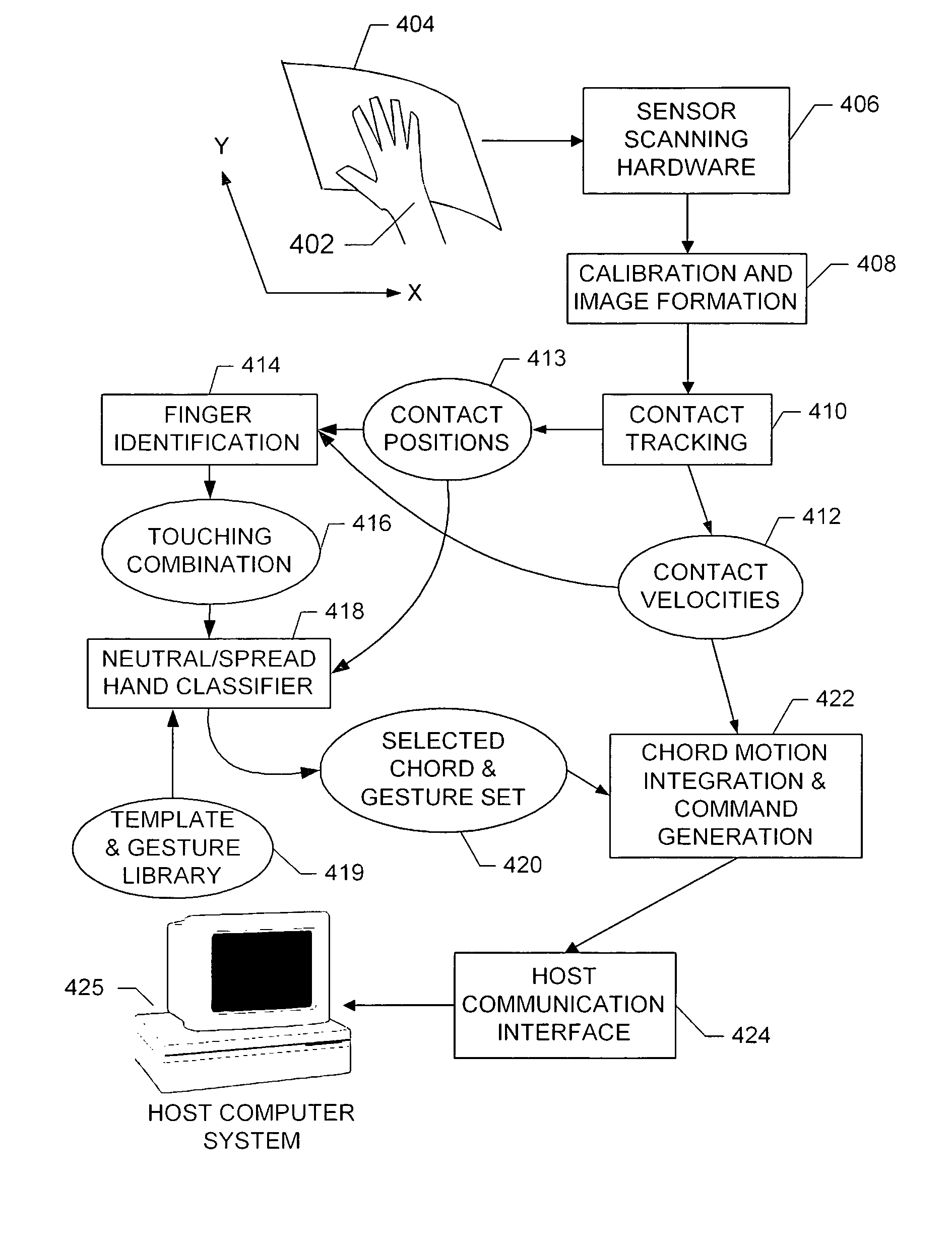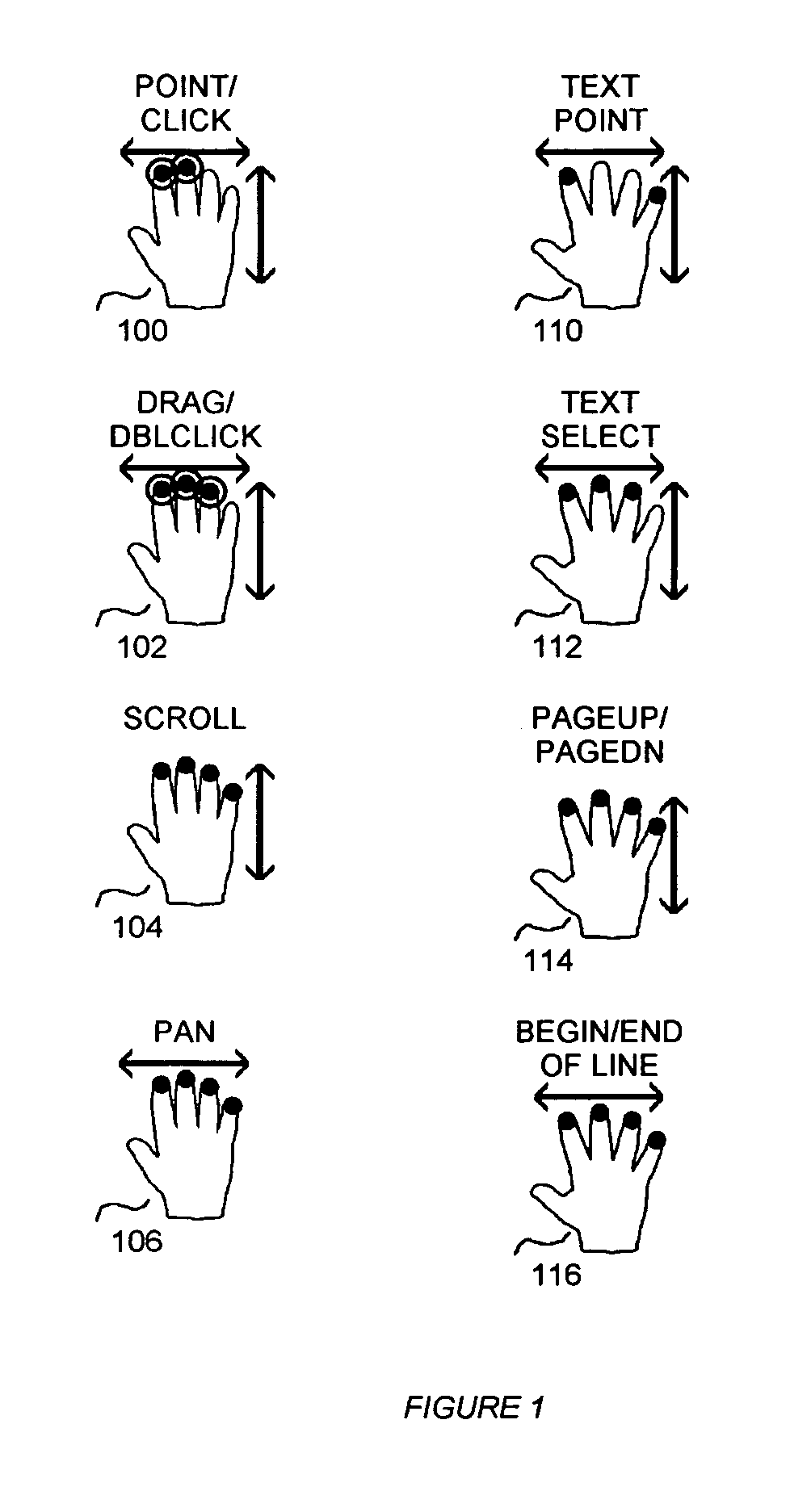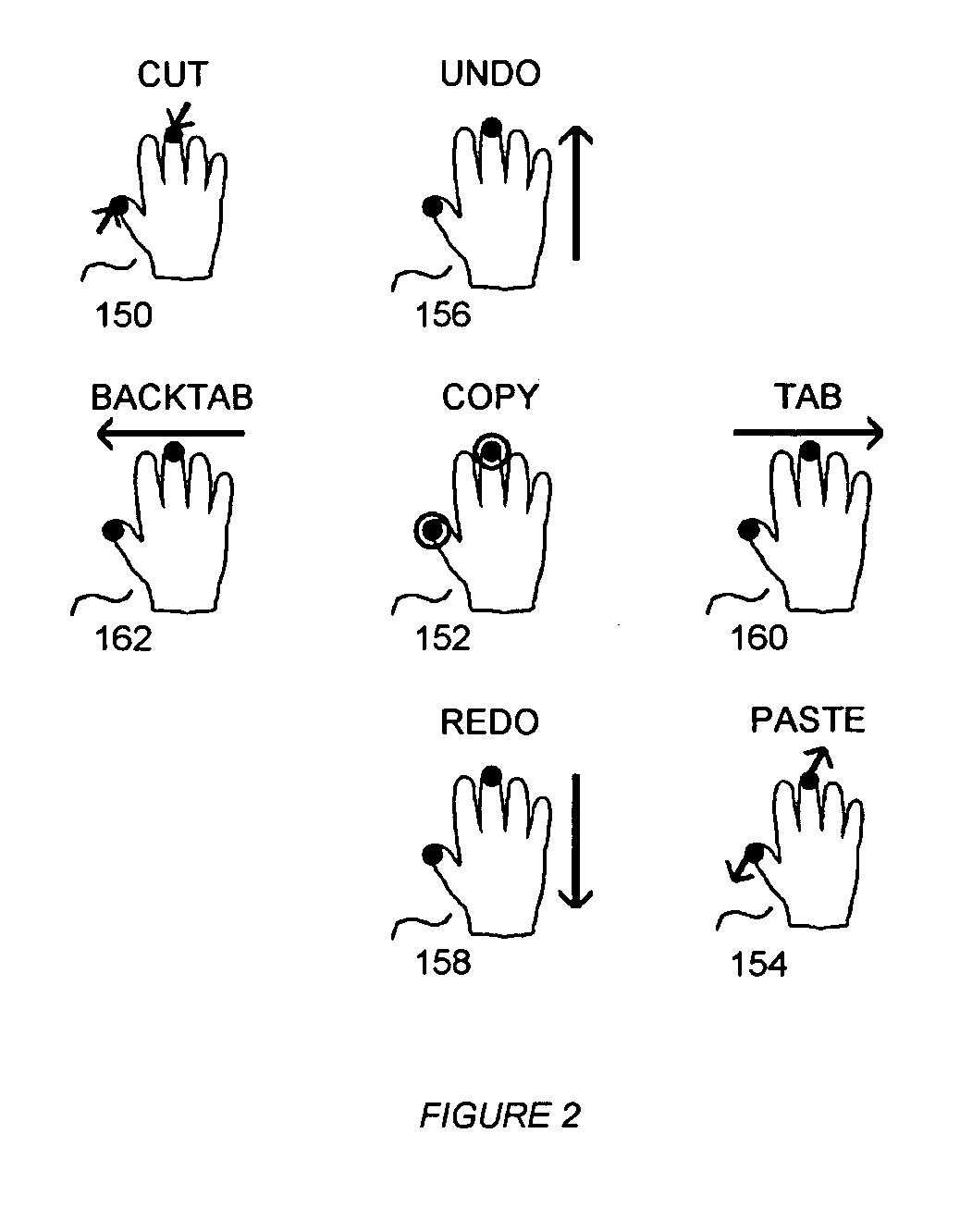System and method for packing multi-touch gestures onto a hand
a multi-touch gesture and hand technology, applied in the field of multi-touch input devices, can solve the problems of limiting the application of scanning methods to gestures involving fingertips, limiting the application of scanning methods to the simplest 1–3 finger gestures, and limiting the application of scanning methods to the simplest gestures involving fingers. , to achieve the effect of reducing both recognition errors and user performance errors, facilitating hand posture, and relaxing hand postur
- Summary
- Abstract
- Description
- Claims
- Application Information
AI Technical Summary
Benefits of technology
Problems solved by technology
Method used
Image
Examples
Embodiment Construction
[0032]Conceptually, the present invention folds the prior two-handed gesture set of U.S. Pat. No. 6,323,846 into one hand by keeping relaxed or neutral-hand versions of the original right hand gestures but mapping the original left hand gestures into equivalent right hand motions that start with fingers deliberately outstretched. Mouse pointing, dragging, and scrolling have become very basic operations for personal computers, and are therefore allocated to the simplest-to-perform chords: two fingertips, three fingertips, and four fingertips, respectively. A clever method for supporting text pointing, text selection, and text paging operations on the same hand with these same chords is for the system to distinguish whether the fingertips are arranged close together or spread apart as they touch the surface and begin the operation. FIG. 1 is a gesture quickguide with annotated hand icons that show the preferred mappings for these two, three, and four fingertip chords. In these quickgu...
PUM
 Login to View More
Login to View More Abstract
Description
Claims
Application Information
 Login to View More
Login to View More - R&D
- Intellectual Property
- Life Sciences
- Materials
- Tech Scout
- Unparalleled Data Quality
- Higher Quality Content
- 60% Fewer Hallucinations
Browse by: Latest US Patents, China's latest patents, Technical Efficacy Thesaurus, Application Domain, Technology Topic, Popular Technical Reports.
© 2025 PatSnap. All rights reserved.Legal|Privacy policy|Modern Slavery Act Transparency Statement|Sitemap|About US| Contact US: help@patsnap.com



